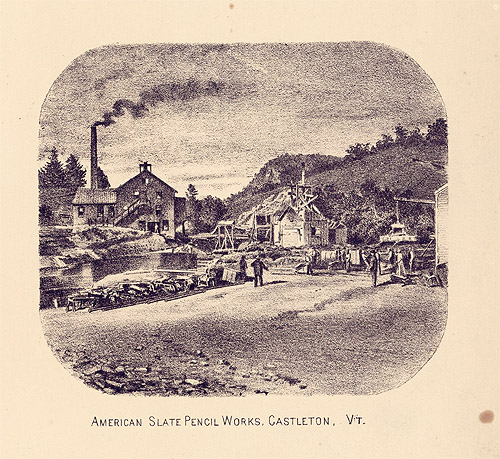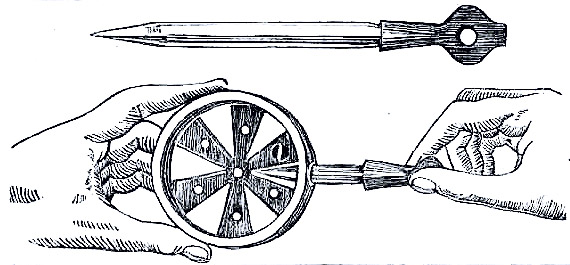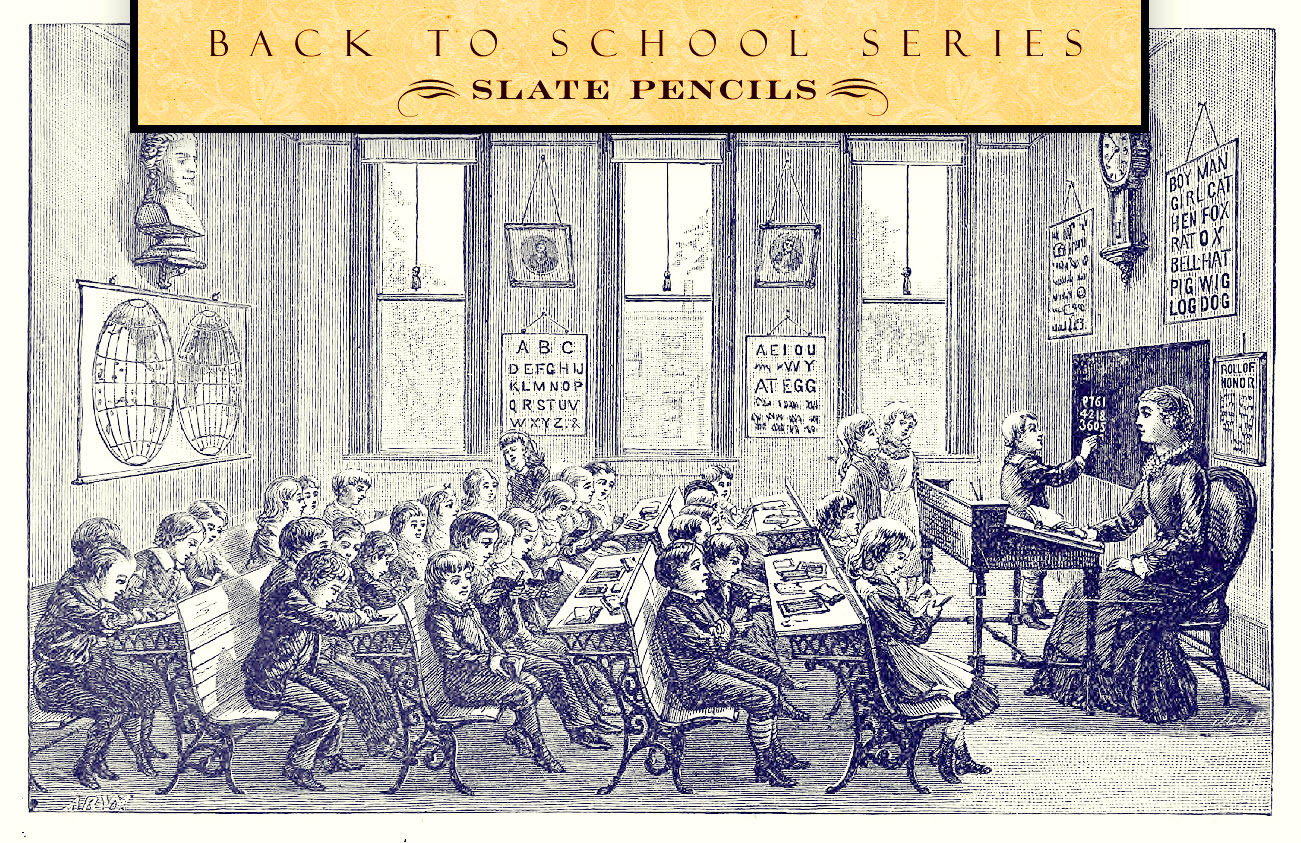Slate pencils were similar to the chalk we use today. Slate pencils were made to use on slate boards, which were the predecessor to chalkboards. At least two varieties of slate pencils could be found in America in the 1870’s or before. A black variety, manufactured in Germany, which was described as being hard, black and full of grit. Then there was the soft lighter colored slate pencil which had been termed ‘Light or Soap Stone’. In the early days these would have looked like they had been whittled out with a knife but around the 1870s they had become perfectly round thanks to advances in the manufacturing process. Tho they had been called ‘Soap stone’ this slate was not made from the stone bearing that name. The color of the ‘Soap Stone’ pencil was apparently a light green color and its texture probably felt like a lot like chalk – being described as soft and chalky.

The ‘Soap Stone’ slate pencils came from a deposit of stone in the North West corner of the town of Castleton, Vermont. The tract of country known to contain the stone was very small being at most only one and a half miles long and half a mile in width. At the time it was known to be the only deposit of rock fit for making pencils of that kind in the world. Every inch of the country for miles and miles around had been searched, in vain, to find another outcrop of this material.
The stone once procured would have been split into slabs of one to two inches thick. Once at the factory the slabs were taken to the first floor of the mill where they would have been sawn into blocks six or seven inches long and four or five inches wide. Then they were taken to what was called the splitting table where workmen seated upon the edge of the table split the blocks into plates or slabs about one third of an inch thick. The tool they used to do this was a hammer and a thin bit of steel. At this point they would have been thicker than the pencils. So they had to be planed. This was done with two broad knives. After this process they are off to be rounded. These machines used to do this process has a series of steel knives made from square bars of steel the lower edge or lower side of which is grooved thus the plates were forced along beneath this knife which makes a number of grooves upon the surface. About two inches behind this first cutter is a second set so as to cut a little deeper and after this another and another until the plate has been carried beneath eighteen of these cutters. When it comes out looking precisely like a small stone washboard where a man sitting at the end of this machine would then take them up and feed them into a machine exactly like the previous one except the little tables that carry the stone under the cutters are grooved to hold the half made pencils. Once complete here boys would gather them up and put them up in boxes and set them upon an elevator where they were carried to the second story of the factory. Now they were sawed to the proper lengths, longest being six inches, the next five then four and some three and a half.

In the early days these slate pencils would have been sharpened using a jack knife. But by the 1870s you could find them pre-sharpened. This would have been done in the factory using a grindstone. Also slate pencils took on the same fashion as the black pencils by having an area to hold that was coated so as to not have a chalky hand when using. Children were especially fond of the colorful ones. Later you could buy a tool for sharpening these slate pencils yourself.

